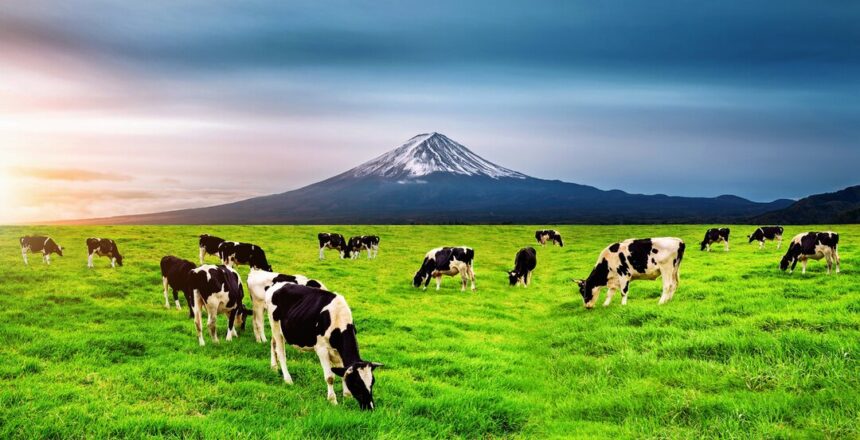Holstein-Friesian cattle, renowned for their high milk production and exceptional dairy qualities, are a popular choice among dairy farmers in South Africa. With proper management and breeding practices, these cattle can thrive in various farming environments, contributing to a successful dairy operation. Here are ten essential insights into breeding and farming Holstein-Friesian cattle in South Africa:
- Origin and History:
Holstein-Friesian cattle originated in the Netherlands and Germany and were first imported to South Africa in the late 19th century. Since then, they have become the predominant dairy breed in the country, valued for their superior milk production and adaptability to diverse climates. - Milk Production:
Holstein-Friesian cattle are renowned for their high milk production, making them an ideal choice for dairy farming. On average, Holstein cows can produce over 9,000 kilograms of milk per lactation, with some individuals exceeding 12,000 kilograms. - Genetic Selection:
Genetic selection plays a crucial role in breeding Holstein-Friesian cattle for improved milk production and overall performance. Dairy farmers often use tools such as Estimated Breeding Values (EBVs) and genomic testing to identify superior genetics for breeding purposes. - Feed and Nutrition:
Proper nutrition is essential for maximizing the milk production potential of Holstein-Friesian cattle. Dairy farmers must provide a balanced diet rich in energy, protein, vitamins, and minerals to support optimal health and milk production. - Housing and Management:
Holstein-Friesian cattle thrive in comfortable housing conditions that protect them from extreme weather conditions and provide adequate ventilation and space. Proper management practices, including regular health checks and vaccination protocols, are essential for maintaining herd health and productivity. - Reproduction and Breeding Programs:
Implementing effective reproduction and breeding programs is vital for maximizing the genetic potential of Holstein-Friesian cattle herds. Dairy farmers often use artificial insemination (AI) techniques and synchronize estrus cycles to optimize breeding outcomes and genetic progress. - Health and Disease Management:
Maintaining optimal herd health is crucial for the success of any dairy operation. Dairy farmers must implement comprehensive health management programs, including vaccination schedules, parasite control, and regular monitoring for common diseases such as mastitis and metabolic disorders. - Calf Rearing Practices:
Proper calf rearing practices are essential for ensuring the future productivity of Holstein-Friesian herds. Dairy farmers must provide adequate colostrum, nutrition, and care to newborn calves to support healthy growth and development. - Record Keeping and Data Management:
Effective record-keeping and data management are critical for monitoring herd performance, tracking breeding outcomes, and making informed management decisions. Dairy farmers often use herd management software and electronic record-keeping systems to streamline data collection and analysis. - Continuous Improvement and Innovation:
Successful dairy farming requires a commitment to continuous improvement and innovation. Dairy farmers must stay informed about the latest research, technologies, and industry trends to optimize herd productivity, profitability, and sustainability.
Breeding and farming Holstein-Friesian cattle in South Africa offer significant opportunities for dairy farmers to achieve high milk production and profitability. By implementing sound management practices, embracing genetic selection technologies, and prioritizing herd health and nutrition, dairy farmers can maximize the potential of their Holstein-Friesian herds and contribute to a thriving dairy industry in South Africa.
Join 'Farmers Mag' WhatsApp Channel
Get the latest Farming news and tips delivered straight to your WhatsApp
CLICK HERE TO JOIN






